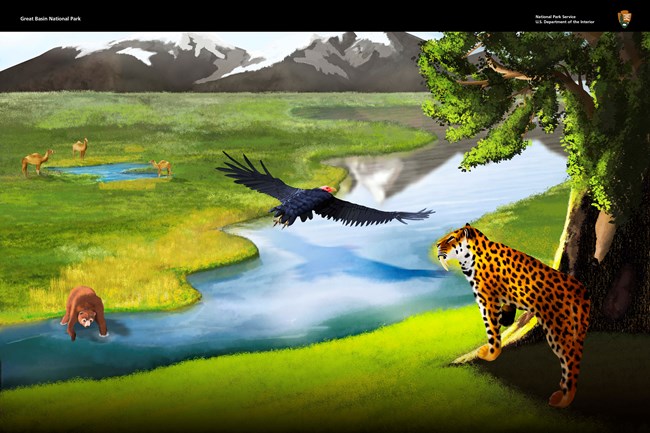
NPS Until about 10,000 years ago, many different animals lived on the landscape. Grazers included camels, various small horse species, large-headed llamas, and a variety of pronghorn species. Harrington’s mountain goats lived on rocky slopes. Predators like Smilodon cats, American cheetahs, jaguars, and giant bears prowled the area. The sky was filled with many raptor species, including the Incredible Teratorn, with a wingspan of 16 feet! A warmer and drier climate caused the lakes and glaciers to shrink, the trees to move up the mountain slopes, and one of the biggest extinction events on earth. Today we look for signs of the past with old shorelines, U-shaped valleys, and bones of these past animals. |
Last updated: November 21, 2024
